Nombre:
Guan Yu de Yuncheng
Otro:
Localización:
Ver mapa más grande
Récord: 61 m
Tipo: Estatuas
Categoría:
Foto:

Voto:
Continente: Asia
País: China
Localización: Yuncheng, Shanxi
Año: 2010
Estado: Terminado
Descripción:Guan Yu (160 – 219) fue un general de la milicia bajo el mando de Liu Bei durante la dinastía Han tardía del Este y el Período de los Tres Reinos de la antigua China.
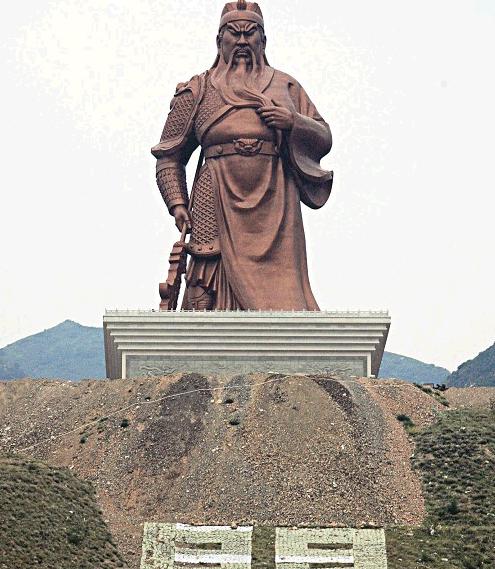
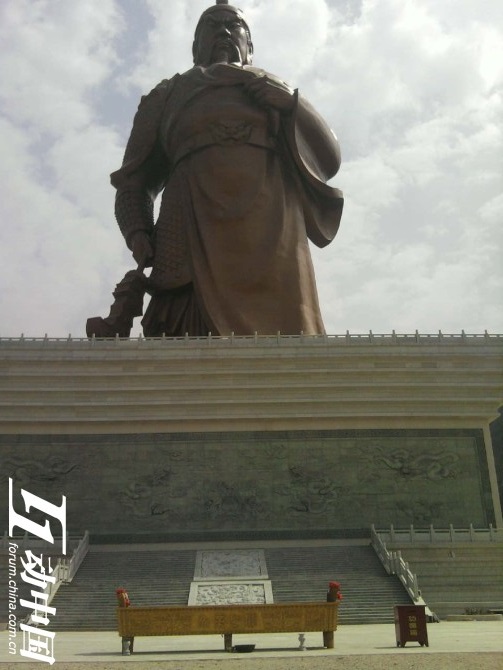
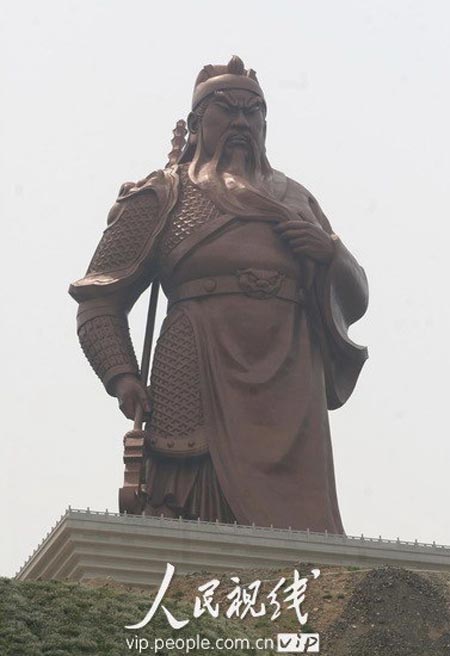
Fue uno de los mejores guerreros de los Tres Reinos. Bien preparado en la administración y preparación tanto de ciudades como de ejércitos. Un gran maestro en la caballería y prácticamente fue reconocido con el mote de "Dios de la Guerra" o, como el "Buda de la Guerra". Fue leal hasta la muerte a sus dos hermanos con los que, en el rosado jardín de melocotones, había jurado:
"Aunque nacidos en días distintos juramos morir juntos en el mismo día del mismo mes del mismo año."
Por sus grandes potenciales fue el general de los "Cinco Tigres de Shu", que eran: Zhao Yun, Zhang Fei, Ma Chao, Huang Zhong y por supuesto Guan Yu.
Guan Yu murió en una de las campañas de Shu contra Wei, que recibieron refuerzos de Wu, lo que supuso la ruptura de la alianza de Shu con Wu. La unidad de Guan Yu fue rodeada por los refuerzos dirigidos por uno de los generales de Wu, Lu Meng, y por la traición de dos de sus generales, acabando con la vida de Guan Yu y uno de sus hijos adoptivos, Guan Ping.
Importancia en la Literatura
Guan Yu fue un héroe imprescindible para el reino de Shu. Se sabe, por la novela de los Tres Reinos, que Lu Meng murió poco después de la batalla. También se dice que la cabeza de Guan Yu fue separada de su cuerpo y fue entregada a Cao Cao, rey de Wei, quien lloró su muerte y le dio honrosa sepultura. En el libro de los Tres Reinos se relata que el alma de Guan Yu produce una especie de frenesi en Lu Meng, que lo conduce a la muerte.
Normalmente a Guan Yu se le representa con una túnica verde, una larga barba,piel roja en algunos casos, su armadura y su Yanyue-dao (arma que según el folclore chino Guan Yu confeccionó). Esta apariencia es confirmada también por la novela histórica del Romance de los Tres Reinos. Con esta imagen, las estatuas de Guan Yu son veneradas por los Taoístas y otros grupos. Guan Yu no es análogo a Tyr o Ares como dios de la guerra. Los anteriores bendicen a los combatientes, mientras Guan Yu venera a la gente honorable y recta en ella.
http://es.wikipedia.org/wiki/Guan_Yu
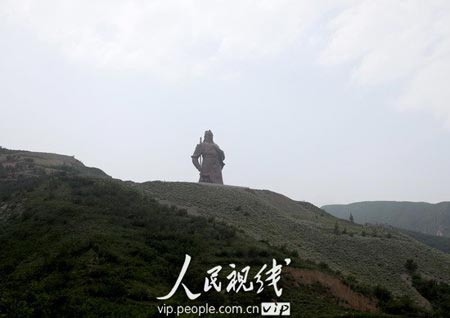
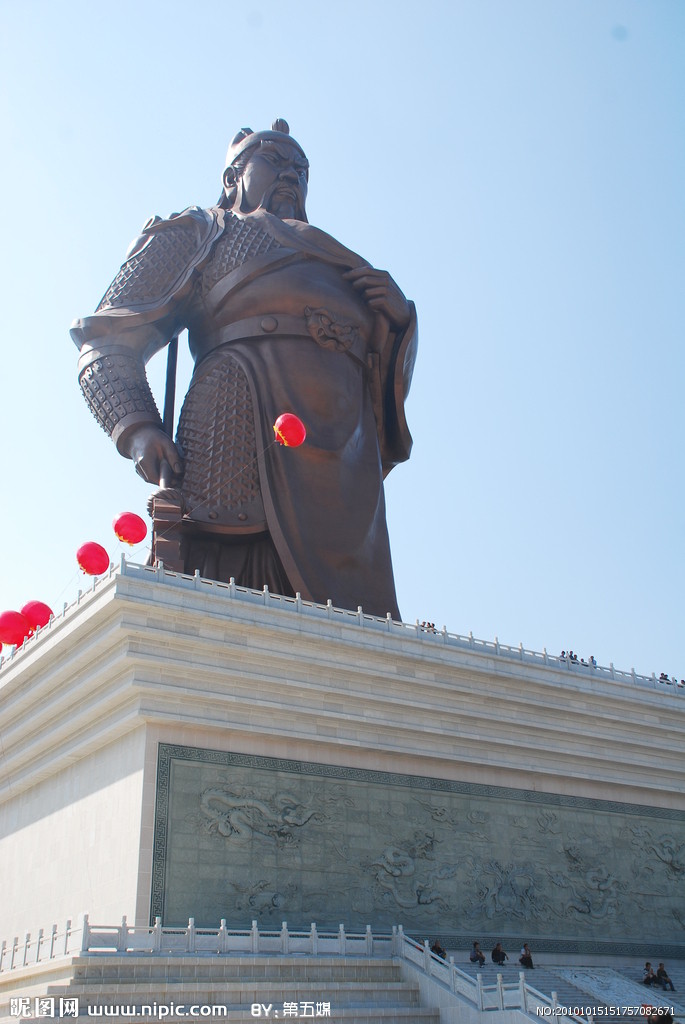
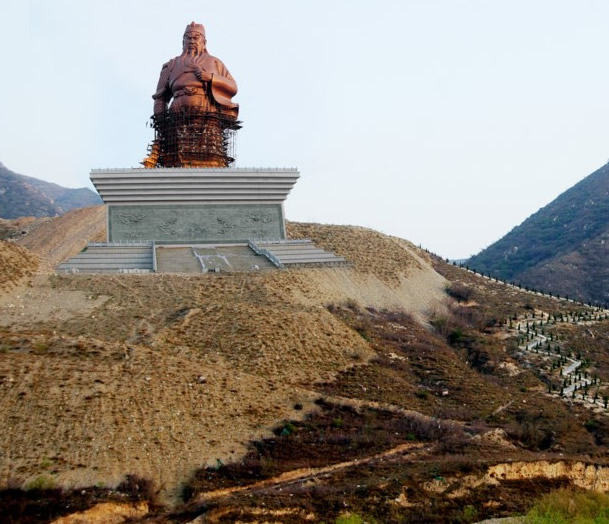
Guan Gong is also named Kwan Kong, Kuan Kong or Kong Chang. He is one of famous Chinese general during the late Eastern Han Dynasty and Three Kingdoms era of China (206 BC – 220 AD). He was always carrying one Guan Dao sword. He is also the brother of the first emperor (Liu Bei) of Kingdom of Shu. Guan Gong played a significant role of establishing the Kingdom of Shu. He is respected as the epitome of loyalty, moral qualities and righteousness. Guan Gong is still being worshiped by Chinese people today.
The legendary life of Chinese hero Guan Gong explodes onto the screen in this lavish epic! From the late years of Dong Han Dynasty to the early days of Three Kingdoms, the story follows three close friends crusading to recover the Han Dynasty over the course of hundreds of battles, with one of them, Guan Yu, becoming the invincible “God of War” through his extraordinary bravery, strength and moral character. As a governor he shows loyalty to the public people, but his ultimate challenge awaits in Mai City where his grand story reaches its climax. Filled with grand visuals and rich historical detail, this compelling, action-packed story rivals the most spectacular tales of heroism and combat in human history.
Guan Gong (Lord Guan): a reverent term of address for Guan Yu (160 – 219) later deified as Guandi (Kuantai). On the picture seen riding his horse Red Hare. He had a huge frame, long beard, dark brown face and deep red lips. “He had eyes like a phoenix and fine bushy eyebrows like silkworms. His whole appearance was dignified and awe-inspiring.”
“Gong” means lord, an honorary title, while “Guan” is his surname. Therefore Guan Gong means “Lord Guan”. His actual name was Guan Yu. This is the name with which he began his military career.
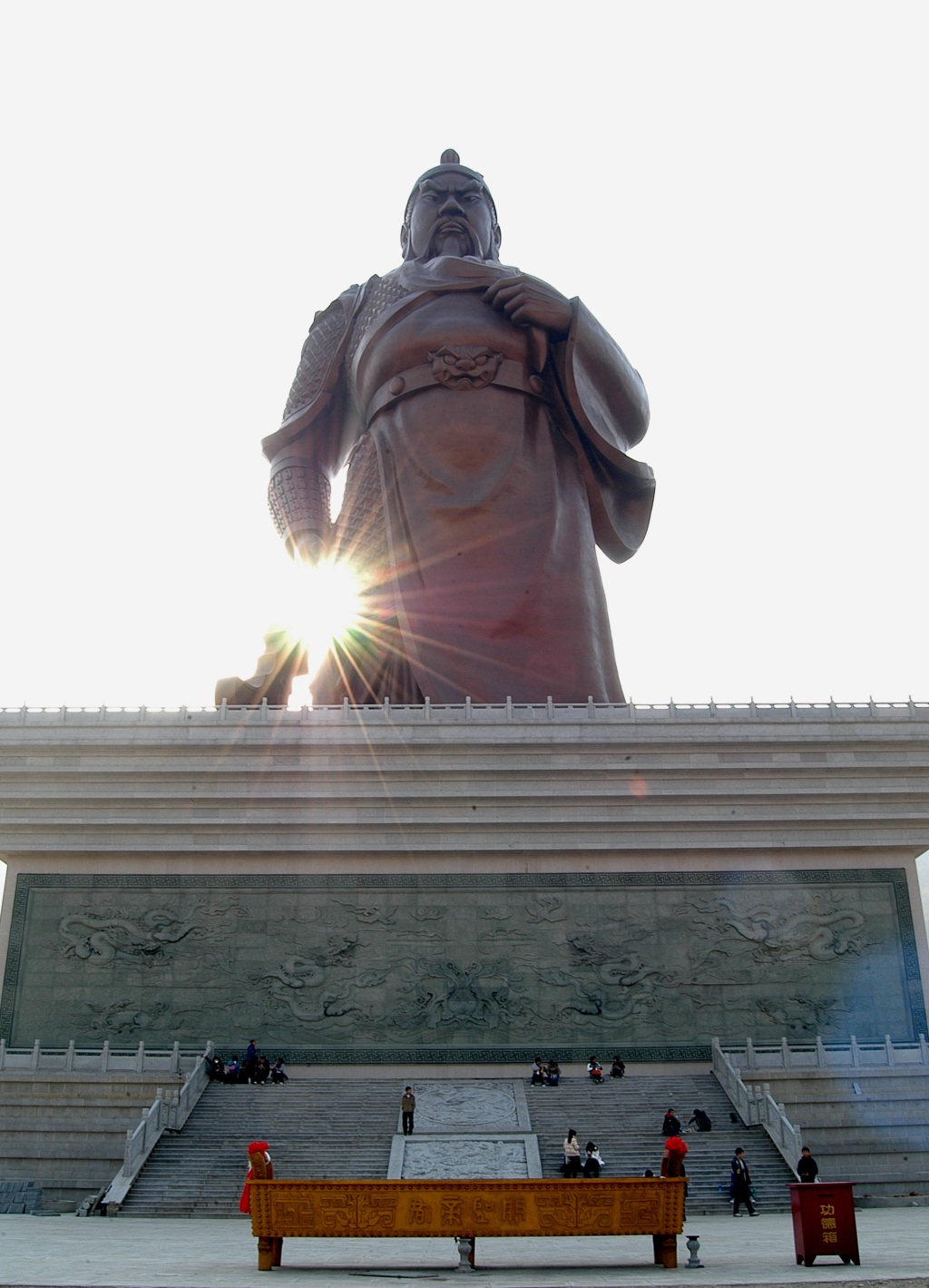
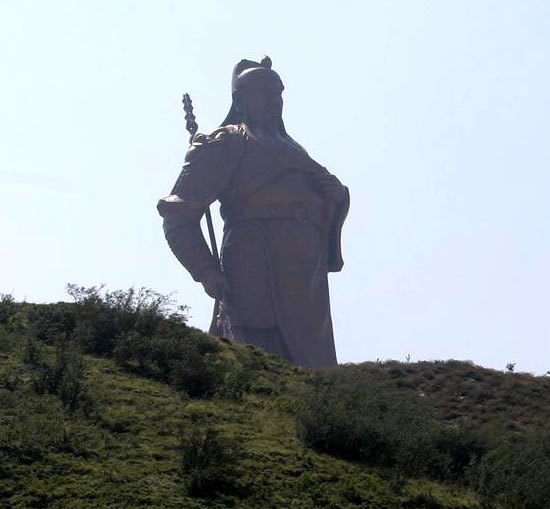
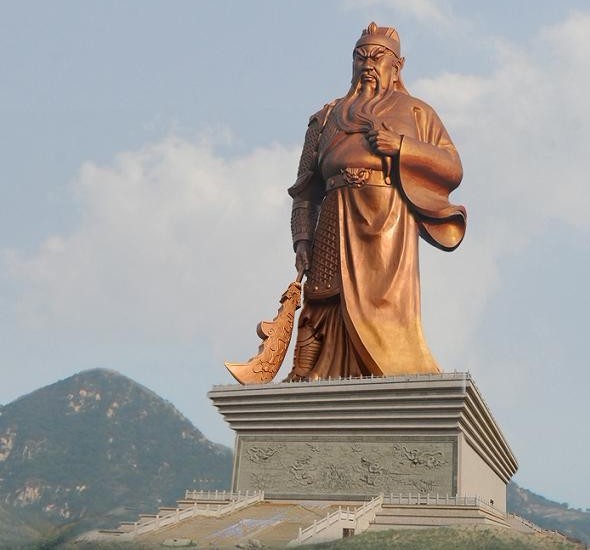
Although there are many legends attached to Lord Guan, he is not a mythological figure, but an actual person from history. He lived in the period of the Three Kingdoms, a time of civil strife and chivalry seventeen hundred years ago.
Lord Guan was born in Xiexian, Shanxi Province in 160 CE. At age 19, he killed an oppressive official and freed his victims. Despite his just cause, he became a fugitive for the half decade following. While on the run, he took refuge in a Taoist Temple. There, a Taoist sorceress told him to wash his face in a spring. The water turned his face a distinctive red, disguising him from his persecutors. Others say it is a manifestation of his righteous anger. We know of Lord Guan’s exploits primarily through the historical novel ‘Sanguo Yenyi’, known in the English-speaking world as ‘The Three Kingdoms’ written by Luo Guanzhong in the 14th century. It romantically recounts the tumultuous period during the fall of the Han Dynasty (206 BCE – 220 CE) and the successive Three Kingdoms period (220-265.)
The virtues Guan Gong personifies – honor, loyalty, integrity, justice, courage, and strength – are ideals that can really impact us. In the West, the few who know Lord Guan sometimes call him the Taoist God of War.
This idea comes from the fact that Lord Guan is easily the most famous general from Chinese history. In battles he invariably dominated the field as the most powerful, most skillful and most courageous warrior, as well as an able leader and tactician.
For the Chinese people, Lord Guan is the god of martial arts, wealth and literature. He is one of the most dominant deities of Chinese and Tibetan beliefs, honored in altars within homes, businesses and schools around the world. Here, his deep impact upon kungfu is exemplified by the practice of Guan Dao.” Gigantic Statues “
http://www.giganticstatues.com/guan-gong/
http://www.zhggwhw.com/Article/ShowArticle.asp?ArticleID=73
http://www.long28.com/show.asp?id=305
http://jjsx.com.cn/c10/0802/16171750963.htm
http://www.world-sino.net/news_read.aspx?id=2769&classid=21
http://xietao6017.blog.163.com/blog/static/11088080201011209201150/
http://www.hdylw.com.cn/2011/1119/11448.html

Vídeo:
Web recomendada: http://www.chinatravelz.com/china/Shanxi/Yuncheng/index.asp
Contador: 10700
Inserción: 2012-10-30 13:55:42
Lugares a visitar en un radio de 100 km (en línea recta)
Mapa de los lugares a 100 km (en línea recta)
Mostrando Registros desde el 1 hasta el 0 de un total de 0
Visitas |
Más visitados Basílica de San Marcos 154580 Catedral de Notre Dame (París) 143895 Torre de Pisa 131297 Monte Saint-Michel 100424 Presa de las Tres Gargantas 81186 |
Incorporaciones |
Comentarios hazola Cúpula de la Roca gracias me... gera Buenos Aires las mejores fotos de la mejor ciudad del... Daniel M. - BRASIL San Francisco ... PEQUE Presa Chicoasén SERA QUE ALGUIEN ME PUEDE DAR MAS INFORMACIÓN DE ESTE PROYECTO ESTUDIO EN LA UNACH Y ES PARA UN... Mery Huaca Pucllana Muy interesante, muy buena la información y... |
 Tweet
Tweet


